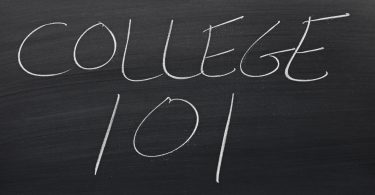Note: The NCAA uses the umbrella term Education-Impacting Disabilities (EID’s) to describe a wide range of disabilities, including learning disabilities and ADHD. For the purpose of consistency and clarity in this article, we will stick with the term EID instead of switching back and forth between that and learning disabilities.
We’ve reached the fourth and final article in our College Baseball Academics mini-series. Before we discuss our final topic, how to succeed as a collegiate student-athlete with an education-impacting disability (an umbrella term the NCAA uses which includes learning disabilities), let’s briefly recap what we’ve covered in the series thus far. In Part 1, we discussed the common academic support services available to student-athletes and provided a broad view of the academic side of playing baseball in college. In Part 2, we discuss the way the NCAA defines education-impacting disabilities and begin to look at what you should do if you have one. In Part 3, we broaden the discussion of how EID’s affect recruits as they navigate the recruiting process. Specifically, we make suggestions for steps that recruits with EID’s should take to get the academic (and athletic) support they need to be successful once on campus. We also discussed the importance of sharing documentation with the appropriate disability services resource center. In this final installment, we discuss how collegiate-student athletes with EID’s can best take advantage of the academic support available to them on campus and make sure they are receiving the accommodations and support they need. Let’s get right to it!
Disclosing Your EID and Getting Help
More than 1 in 10 college students have an EID, so you will not be the first one to seek accommodations and support and you definitely shouldn’t feel ashamed about doing so. Most problems for student-athletes with disabilities come from a failure to disclose their EID at all or in a timely manner. So step 1 is to tell the people who can help you. For better or worse, the burden of disclosing your EID falls on you. Even if you registered your EID with the NCAA during recruitment, they will not share this information with your school or anybody else unless you request it. As such, it’s your responsibility to:
- Disclose your EID to your coach and the academic support people who work with the baseball program so that they can help you
- Disclose your EID to your school’s disability resource center and share your documentation so you can officially receive accommodations through the school’s system (your academic advisor and coach can often help!)
- Once approved by the school’s disability resource center, you will likely be provided with a letter to share with your professors. Some schools will require that the disability resources center sends the letter directly to your professors. Don’t assume that the letter is enough. Make an appointment or go to office hours and disclose your EID and accommodations to your professors. You can work with your professors to clarify any confusion and to find the best way to implement your accommodations
- Disclose any medication you take for your EID to the athletic training staff at your school
Common Issues that Student-Athletes Run Into
If you have a documented EID, you should have done two things during the recruiting process: 1) Made sure the school has the support that you need and; 2) Made sure that your documentation is in order. It’s also important to make sure the disability resources office will accept your documentation.
Insufficient or Missing Documentation:
The hardest thing about transitioning from recruit to student-athlete when you have an EID is that each college or university has a different system for accepting documentation and providing accommodations. If you do your homework up-front as we suggest in Part 3, it will make the transition to campus and receiving help much easier. Whether you have done these things or not, the first thing you will want to do is to connect with the school’s office of disability services if you haven’t done so already to make sure that they accept your documentation. This is usually what slows the process of getting support down the most. The sooner you can begin this dialogue and get the school what it needs, the better. Consider working with the coaching staff and baseball’s academic support people to set this up the summer before school starts.
Expired Documentation:
Again, you will want to check with the school’s disability resource center to make sure your documentation has not expired. The older the diagnosis of an EID, the more on top of your documentation you will need to be. For example, if you were recently diagnosed with an EID as a senior in high school, you are much less likely that run into problems than if you were diagnosed as a 5 year-old and haven’t been re-tested since. Many times documentation is reviewed on a case-by-case basis and each school is different with their requirements. Starting early is important to make sure you have time to provide clarification or appeal if your initial documentation is not accepted.
Medication Waivers
Treating some EID’s with prescription medication is common, but as a student-athlete, you will need to make sure you get a medical exemption from the NCAA. A player who fails to get the required medication exemption from the NCAA may be penalized for failing a drug test, even if the failed test is a result of medication prescribed by a doctor. You will want to disclose any medication you take to the athletic training staff at the beginning of the year to ensure that they help you file the appropriate paperwork. In order to receive the exemption, you will need documentation from your doctor, so have that documentation ready to go in addition to any written descriptions and test results documenting the diagnosis of your EID.
What if I’m Undiagnosed but think I have an EID
Colleges often have great resources available for students who are struggling or concerned that they might have an EID. If this is a concern, talk with your coach and your academic support person on campus so they can direct you to the right person at the school’s disability resource center. Whether in high school or college, you should always feel comfortable seeking help with your academics and mental health. In college, the most successful student-athletes seek out this help before they have a big issue on their hands, and you should start this habit now.
Summary
At the beginning of this mini-series, we set out to answer important questions about the academic side of being a student-athlete and explore the resources available to help recruits and college players overcome learning challenges. We answered:
- What type of academic support services are available to college baseball players
- How the NCAA defines EID’s and accommodates students who have them
- What steps to players with EID’s need to take during recruitment to ensure that programs can provide them with the support they need to be successful
- How collegiate student-athletes with EID’s can get the support they need once on campus
You may be sick of hearing this by now, but the bottom line in this entire mini-series is that you have a whole team of people who want to help you succeed in college and you should feel comfortable leaning on them for help. Whether or not you have an EID, it helps to be prepared and organized as you get ready for the rigors of college. Planning ahead is key to a successful transition, and by reading this mini-series you are already on the right track. Colleges and universities have tremendous support services for students and baseball programs often have additional built-in resources and support to help on top of what is already provided to all students. Take advantage of the resources available, ask for help early and often, and dominate college like we know you can!







